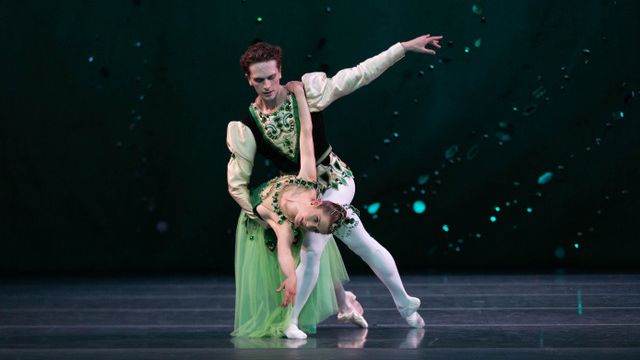Jewels
The Australian Ballet’s latest production of Jewels is a departure from their usual ‘story ballets’ (e.g., Swan Lake and Sleeping Beauty). It strips away any conventional trimmings of ballet and relies wholly on dance alone, and does it brilliantly!
Premiering in 1967 at the Lincoln Centre in New York, George Balanchine’s Jewels is a sparkling, shining and glittering example of classical ballet technique.
George Balanchine has been called a genius. He’s often been referred to as “the father of American ballet”. Born in St. Petersburg, Russia in 1904, Balanchine made the United States his adopted homeland in 1933. Before traveling to America, he enjoyed success in France as a choreographer for the Ballet Russe, where was exposed to many of the leading European artists of the day.
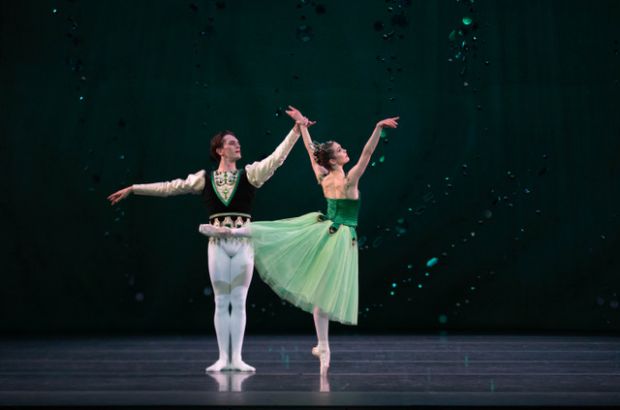
During his lifetime, Balanchine choreographed a massive 465 dances! While many have been lost, those that remain are an important part of the repertory of the New York City Ballet, and are performed by companies all over the globe.
Jewels is unique: a full-length, three-act plotless ballet, inspired by the artistry of jewellery designer Claude Arpels and revealing the essence of emeralds, rubies and diamonds. Each section of the ballet is distinct in both music and mood.
Emeralds, set to an ethereal score by Gabriel Fauré (extracts from Pelleas and Melisande and Shylock ), is a salute to France. The elegance of the choreography, coupled with green Taglioni tutus, recalls the 19th century dances of the French Romantics. It is danced in a plethora of glittering green jewels, as if set on an idyllic forest glade. The stage is bathed in a green phosphorescence that shimmers off the women’s long, flowing skirts, recreating the original designs by Barbara Karinska, dripping with sparkling stones.
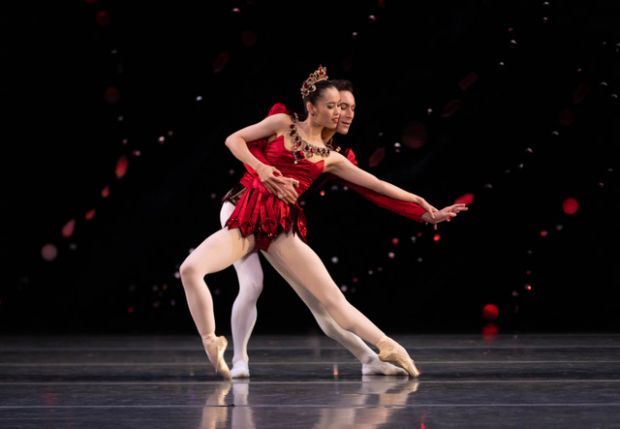
In Emeralds, the principal couples comprising Sharni Spencer and Callum Linnane, alongside Dimity Azoury and Maxim Zenin, offer elegant and technical interpretations of the French style. This piece is known for its stylistic difficulty, requiring a subtlety that can easily approach aloofness. There were a couple of glitches on opening night, but this did not detract from the enjoyment of the piece. Also admirable was the pas de trois of Jade Wood, Yuumi Yamada and Lucien Xu, who brought energy to their performance of complex choreography and style.
Following on from the graceful Emeralds, the set of Rubies designed by Peter Harvey who designed the whole production, (set to Igor Stravinsky’s Capriccio for Piano and Orchestra) changes from soft green to bright, fiery red under Perry Silvey’s artful lighting. The choreography is jazzy, dynamic, playful and most of all joyous.
There’s an element of Broadway brashness in the women’s high kicks and off-centre developés and foot positions. The key roles go to a pair – Brett Chynoweth and Ako Kondo, both well chosen for their technical prowess and their ability to engage with the audience.
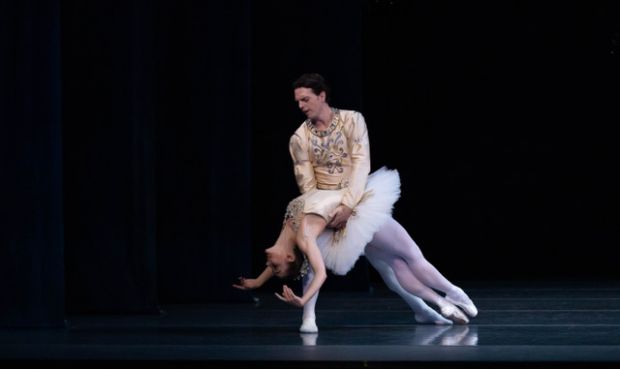
The costumes are short, showing the female dancer’s legs and ensuring every step is clearly seen. The dancers flirt, cavort and seem to enjoy every moment of their performances. Particularly impressive is the section near the end with a long-legged Belle Urwin being ‘manoeuvred’ by 4 male dancers like a puppet with 4 puppeteers, one of Balanchine’s clever innovations.
On a side note, it was puzzling to see one member of the female corps in flesh tights when everyone else in the evening’s performance wore white tights. I can only assume something went wrong at the last moment.
The final act of Diamonds, set to Tchaikovsky’s Symphony No 3 in D Major Op. 29, earned a well-deserved round of applause and audible gasps as the curtain lifted to reveal the glimmering vision of a sumptuous imperial ballroom, the dazzle of diamonds radiating from set and costumes, the women now in generous white tutus, the corps de ballet arranged on stage, evoking the grandeur of Imperial Russia.
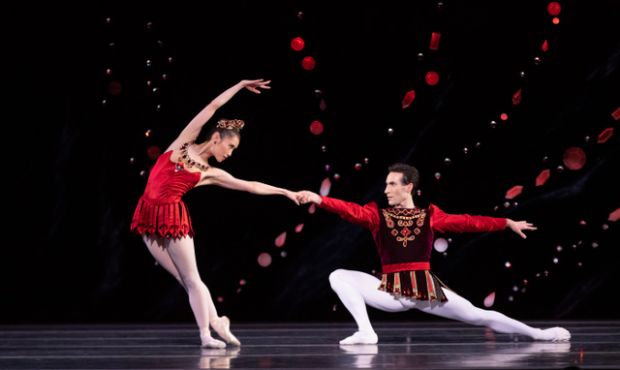
Regular ballet-goers will detect intentional quotes from the great Russian classics, such as Swan Lake.
Benedicte Bemet and Joseph Caley, the principal couple are perfectly cast technically and stylistically, and the corps de ballet are sublime, filling the stage with style and grace imbued with Balanchine's reverence for his homeland.
With the lines, patterns and perfect port be bras we expect in a large ballet, the corps de ballet form an integral part of this salute to the Russian classics.
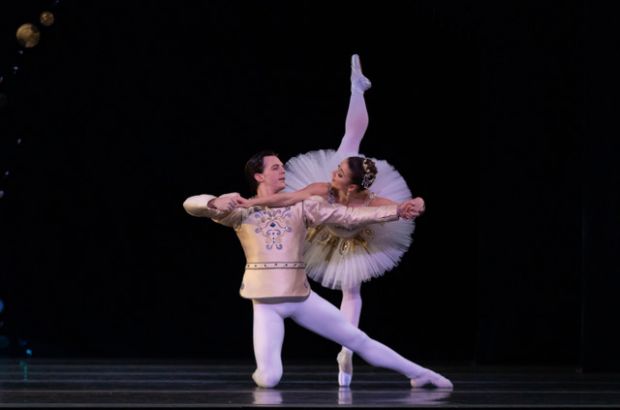
Diamonds ends with the entire cast parading downstage in perfect unison, a finale designed to elicit rapturous applause, which it duly did.
The Adelaide Symphony orchestra, under the baton of Jonathan Lo, are to be congratulated for executing three completely different styles of music to perfection. It is always a pleasure to hear them play!
Jewels is a piece for any ballet lover who enjoys pure story-less dancing. It is a glittering diadem of precious stones and technical wonder!
Barry Hill OAM
Photographer: Rainee Lantry
Subscribe to our E-Newsletter, buy our latest print edition or find a Performing Arts book at Book Nook.

